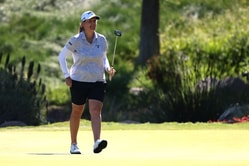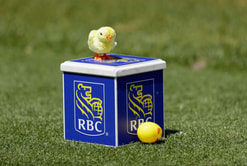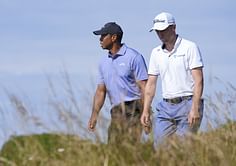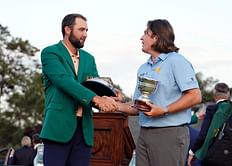
The Masters Tournament is one of the four annual golf major championships and was first played in 1934 at Augusta National Golf Club in Georgia. Unlike other majors, it is always held at the same venue, known for its undulating greens and strategic layout. The invitational field comprises top-ranked professionals, recent major winners, and leading amateurs. Further, Augusta National has undergone several renovations to maintain its difficulty, including lengthened holes and restructured bunkers.
The Masters Tournament also has a rich history of traditions, like the champion receiving a green jacket, a custom dating back to 1949, and is invited to return each year. Past winners gather for the Champions Dinner, a tradition started by Ben Hogan in 1952, and the tournament opens with an honorary tee shot by legendary golfers, usually past winners. Also, the Par 3 Contest is more like a customary warm-up before the first round of the first major of the season.
The Masters Tournament History
The Masters Tournament 2025 will be the 89th edition of the event. It started in 1934 and has been held every year since, except for three seasons canceled because of World War II from 1943 to 1945.
It all began with Robert Tyre Jones Jr., aka Bobby Jones, a professional lawyer and part-time amateur golfer. By the 1920s and 1930s, he had established himself as the world's most famous amateur golfer. In 1930, he completed a Grand Slam, winning all four majors (of his era) in the same calendar year. After this, he retired with the idea of constructing a golf course. As a result, he sought the help of Clifford Roberts, an investment banker.
Roberts and Jones found a piece of land in Augusta, Georgia, that had been an indigo plantation and a plant nursery between the early to the mid-19th century. This became the "Augusta National Golf Club," as the world knows it. Jones and Alister MacKenzie started designing the course in 1931, and by 1932–1933 it was ready for play.
As per the Masters website, Bobby Jones at the opening of the club said:
"Our overall aim at the Augusta National has been to provide a golf course of considerable natural beauty, enjoyable for the average golfer and at the same time testing for the expert player striving to better par. We want to make bogies easy if frankly sought, pars readily obtainable by standard good play, and birdies, except on par 5s, dearly bought."
When Was the First Masters Tournament?
The "Augusta National Invitation Tournament," as it was originally called, was held for the first time in 1934. The tournament was held at the Augusta National Golf Club in Augusta, Georgia, and was held from March 22 to 25. The inaugural event was won by Horton Smith with a score of 284, 4 under par, by two strokes over Craig Wood. Smith earned the winner's share of $1,500 of the purse of $5,000. Interestingly, Bobby Jones returned from retirement at this event, finishing tied for 13th place.
The name "Masters Tournament" was given in 1939. The name was a result of Roberts' suggestion, as he intended for the field of golfers participating to be projected as the "masters of golf," as per NBC Sports. In the same year, per the event's website, Roberts said:
"While we may not have expected it originally, we have created a tournament of such importance that we are bound to see that it continues."
How Long Is the Masters Tournament?
The Masters Tournament is a four-day tournament that begins on Thursday and ends on Sunday.
FAQs on How old is the Masters Tournament?
A. The Masters Tournament was inaugurated as the "Augusta National Invitation Tournament" in 1934. Founded by Bobby Jones and Clifford Roberts.
A. The Masters Tournament 2025 will be the 89th edition of the event.
A. The Masters Tournaments were named so on the suggestion of the event's co-founder, Clifford Roberts. He intended the participating golfers to be called the "masters of golf."
A. The inaugural Masters Tournament was won by Horton Smith in 1934.
A. The most Masters tournaments were won by Jack Nicklaus six times: in 1963, 1965, 1966, 1972, 1975 and 1986.









